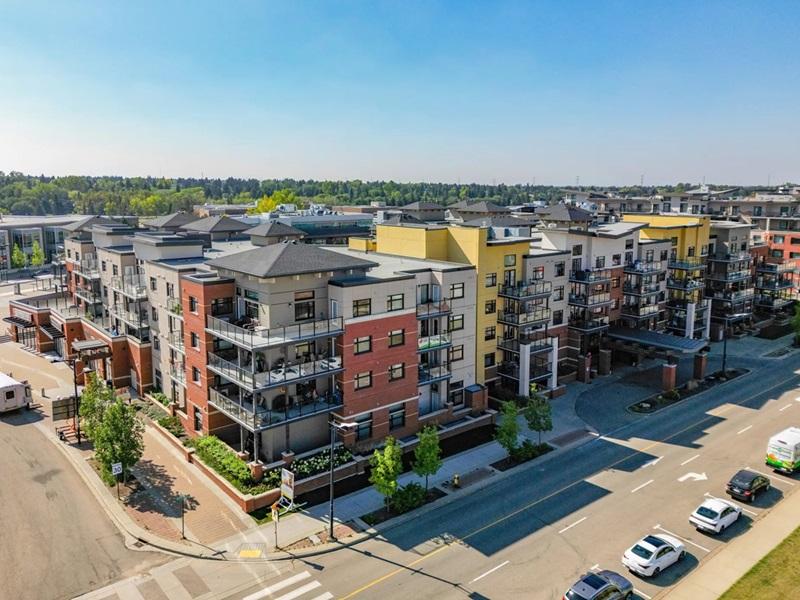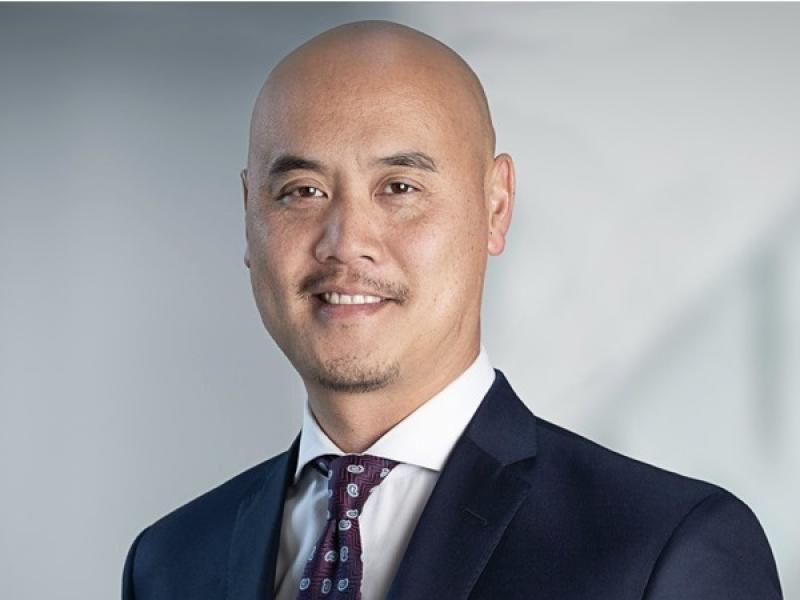
As the new CEO of Northcrest Developments, Derek Goring has stepped into a once-in-a-lifetime opportunity: heading up the transformation of the 370-acre Downsview Airport Lands site in northwest Toronto.
Goring assumed the new position on May 30 after serving as Northcrest's executive vice-president of development since October 2019.
“It feels good and the response has been good and I'm really enjoying the responsibility and the privilege of having this job,” Goring told RENX. “It’s really fun and I love doing it.”
Goring’s previous private and public sector experience as senior VP of development for First Gulf, senior VP of land development for Infrastructure Ontario and development director for Waterfront Toronto will serve him well for the Downsview project, which is expected to take 30 years to complete.
“It does feel like all the work that I've done for the last 20 years led to and prepared me for this,” Goring said. “It just came along right at the perfect time for me.”
Northcrest and Canada Lands collaboration
PSP Investments acquired the 370-acre Downsview property from Bombardier for $825 million in 2018 and created Northcrest as a wholly owned subsidiary to oversee the development.
Bombardier will start moving from the site in August, setting the stage for the first phase of the multi-decade project.
Canada Lands Company owns an adjacent 150 acres and has been working closely with Northcrest for the past few years.
While that collaboration will continue, the nature of the relationship will change once the Downsview Area Secondary Plan is approved by City of Toronto officials.
The plan will set out the long-term vision for a complete community centred on transit investment, job creation, parks, open spaces, community services and facilities to meet the needs of existing and future residents and workers.
The Downsview Area Secondary Plan area is generally bounded by Keele Street to the west, Wilson Heights Boulevard to the east, Sheppard Avenue to the north and Wilson Avenue and Highway 401 to the south.
“It only made sense to plan it as one parcel, which is what the Secondary Plan will do,” Goring said, “but the phasing that we're proposing means that we're starting at the far edges.
“So, effectively, once the Secondary Plan is finished, we'll become neighbours, but also to a certain extent competitors. They're developing their site and we're developing our site and the neighbourhoods we're starting with are not next to each other.
"Because the site is so big, it's almost like they're in different submarkets.
“So we'll continue to talk to them and I'm sure that relationship will continue to be good, but I don't expect that we'll be spending as much time with them in the future as we have been over the last couple of years. And that's not because we don't want to; it's just the natural evolution of how the site is going to build-out.”
The adjacent 291-acre, Canada Lands-owned Downsview Park, which was created in 2012 and is separate from the Downsview Airport Lands, will remain at the heart of the community and won’t be reduced in size.
Work being done with variety of stakeholders

Northcrest has also been working with Indigenous rights holders and other stakeholders, and Goring said that will continue.
“The tools and formats will evolve over time, I'm sure, but it's really about how we continue to ensure that the input and feedback of those groups are embedded in the decision-making process of how the site is going to evolve.
"With the plan that we have, and as much as I think it's a really good plan, to suggest that it's not going to change over the course of 30 years is just not realistic.
“There will be opportunities, market changes and technology changes. Social conditions and political considerations will evolve. We're going to need to evolve as well."
A framework is being established that will tie all of the site’s neighbourhoods together, while also ensuring they retain their own distinct character. The existing airport runway will be repurposed into a public space to connect the neighbourhoods, according to Goring.
The Hangar District
The first neighbourhood to be created will be the 102-acre The Hangar District, which is proposed to include:
• 2.2 million square feet of residential gross floor area (GFA) for 2,850 new homes;
• 2.9 million square feet of non-residential GFA, including approximately 1.5 million square feet of retrofitted airplane hangars;
• more than six acres of parks and open spaces as well as a direct connection to Downsview Park;
• access to three subway stations and one regional GO Transit station;
• a new elevated pedestrian and cycling bridge, as well as cycling infrastructure throughout the district;
• active programming, including new public art and community and recreation facilities; and
• a focus on low-carbon, innovative energy and mobility solutions, as well as blue-green infrastructure.
“It will be very different than any of the other neighbourhoods, with lower density and much more employment-oriented than the other districts,” Goring said of The Hangar District.
“We're spending a lot of time thinking about the public realm and the retail and other uses that will ensure that it has a sense of place from the minute that it's opened, and part of that is doing a pretty significant amount of development in that first neighbourhood up front.
“It’s going to be a very large first phase so that it doesn't feel like the first people moving in are going to feel like they have to wait 10 or 15 years to get the full experience of the neighbourhood.”
Film and television production studio
PSP Investments and Los Angeles-based Hackman Capital Partners, a privately held real estate investment operating company and owner of studio-based equipment and production vendor The MBS Group, signed a memorandum of understanding two years ago for a long-term ground lease and the construction of a film and television production studio campus.
The deal will see an investment of approximately $200 million and is expected to create thousands of new direct and indirect jobs. The long-term plan envisions more than one million square feet of production and support space, with sound stages ranging from 20,000 to 80,000 square feet.
Goring is hoping to get the Secondary Plan approved in the first half of 2024, followed by approval for The Hangar District. The goal is to start construction in 2025.
Taking advantage of the site’s scale
“It's really important that we are looking at this not just as a series of buildings, and we're doing residential, office, retail and industrial,” Goring said. “What’s as important, or more important, are the spaces between the buildings and the way we're doing it.
“There’s a big focus on things like community benefits, affordable housing, parks and public spaces, and ensuring those places are really done at a high quality and with involvement from the community.
"I think the process that we're following is pretty unique and different than the way typical development happens, and that's partly because of the scale that we have, and we're really trying to leverage that scale to do things differently. "
Among these are "proactive" attempts to include schools, community facilities, parks and public spaces as well as considerations for affordable housing, he said. The project is also considering arts, culture and employment opportunities.
“There are a lot of things that we're doing that either aren't typically required or aren't (normally) possible, because of the scale that we're working on, and that's something that is both challenging but also really exciting and rewarding.”










